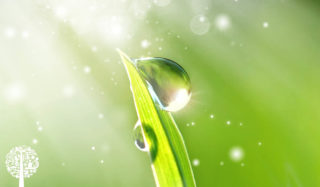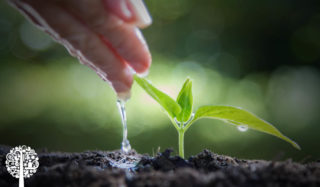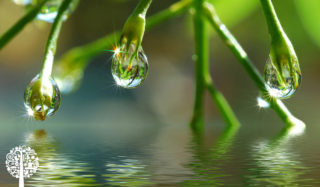Do you know if you have hard or soft water and the difference between the two? And how can it affect your plants if you rely on a domestic water supply to feed an indoor grow? Let’s take a look!
Soft Water
Soft water reaches our household taps with low mineral content, much like when it fell as rain. Soft water is rainwater that falls onto bedrock made up of metamorphic rock. Metamorphic rock has been compressed over thousands of years and is not very porous. So rainwater runs off it and does not pick up any extra minerals along the way.
Hard Water
High mineral content is what defines hard water. Hard water is created when rainwater falls onto porous sedimentary rock such as chalk, limestone, flint, and sandstone. From there, it seeps through the ground and retains small amounts of chemical compounds. The main chemical compounds that make up hard water are calcium and magnesium. However, other minerals, such as iron, manganese, and chloride can also be present.
Measuring Water Hardness and Human Health
Water hardness is measured in calcium carbonate parts per million. Soft water has under 60ppm, while very hard water registers at more than 180ppm.
There is nothing to worry about regarding human health, with the World Health Organisation stating that “there does not appear to be any convincing evidence that water hardness causes adverse health effects in humans.” Minerals such as calcium and magnesium are essential for maintaining health, so drinking hard water contributes to the recommended daily allowance.
Water Hardness and Plant Health
Unfortunately, the same cannot be said for growing equipment or a plant’s health if hard water is used in an indoor garden. Hard water can cause limescale build-up that damages growing systems by reducing water flow, pressure, efficiency, and lifespan. Limescale is visible as a white, chalky build-up that accumulates quickly. So it’s no surprise that hard water is not recommended for use in recirculation systems or similar.
Hard water can have a detrimental impact on plants if left untreated. While high levels of calcium and magnesium aren’t problematic, they can lead to nutrient imbalance. The more calcium and magnesium the water contains, the higher the possibility that other nutrients, such as potassium and phosphorous, will be locked out. This can lead to a host of nutrient deficiencies that can cause growth and development issues.
The positive ions in the calcium and magnesium will increase the pH level of the feed solution, as will any excess CO2 carbonates in the water. As a result, the pH will become more alkaline, and you will have to monitor and adjust it carefully to keep it within plant-friendly levels.
Fixing Water
So how do you combat the effects of hard water on your indoor grow if you live in a hard water area? Hard water feeds are available; they work by reducing the overall pH of the feed solution. If the pH remains too high, you can use ‘pH down’ to reduce it further.
There are also feeds available for those growing in soft water areas. However, keep in mind that soft water is not a problem. Soft, slightly acidic water is the perfect condition for nutrient uptake in plants. It causes no issues to equipment, so a standard feed will work just fine unless your water is incredibly soft and your pH is very low. Likewise, standard feed works well in soft to modestly hard water areas. If you decide that you need a soft water feed, however, take note that they do not alter the pH of the feed solution, and it will require changing through the use of ‘pH up.’
Reverse Osmosis
Another solution for hard water is reverse osmosis or RO. Reverse osmosis is a filtering system where the water is forced through a membrane, trapping particles and removing impurities down to 0.0009 microns. Having water free from contaminants and minerals offers a more controlled grow. Nutrients can be better managed without worrying about what was in the water source at the beginning.
If you can afford RO, the results make it worth the initial expenditure. However, growers can address most moderate problems by other, less expensive means. First, establish whether you live in a hard or soft water area. You should be able to check this information easily online. Then, check if you should use a hard or soft water feed. If this doesn’t do the trick, consider RO. RO is great for having ultimate control over your plant’s nutrition, as you will be adding everything they need to your water source. Be meticulous; the results will be more than worth it.
Up For a Challenge?
There’s nothing to fear! If you live in a hard water area, there are plenty of ways to manage the situation and still run a successful indoor grow with fantastic results. If anything, overcoming the extra challenge will make you a better gardener.


